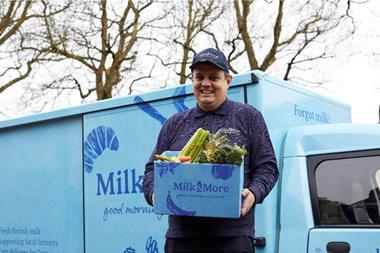
Despite initial investor scepticism, the fmcg sector demonstrated remarkable pricing power in 2022. With the new pricing window in Continental Europe now opening, we expect another wave of pricing, but also more retailer pushback. High-profile delistings are becoming more frequent.
The question for investors now is: how much pricing will companies hang onto in 2023, and who can still deliver volume growth in the face of a weakening consumer? In short, volume becomes the kingmaker this year, and the winners and losers should become increasingly obvious.
In terms of sector margins, we expect a bounce-back in 2023, albeit somewhat second-half weighted, as hedges roll over and the cost base better reflects the reality of weakening commodity prices. However, manufacturers have little incentive to talk up margin recovery, knowing retailers will be listening carefully. The retailers will be ‘chomping at the bit’ to pass back lower costs to hard-pressed consumers, especially as they have been losing shoppers to hard discounters.
And even if gross margins surprise positively in 2023, it doesn’t necessarily follow that the benefit will drop through to operating margins, as it will depend on how much reinvestment there is. One clear headwind for most will be higher wage inflation in 2023 vs 2022 given the labour market remains very tight. The other big swing factor this year could also be the return of promotional spend, which has been muted since the covid pandemic but where we are seeing evidence of a spike in recent weeks.
The official line from most companies is there will be a pickup in promotional spend where there is a high return and where it drives footfall and retailer shelf velocities. Ongoing supply chain disruption has meant there is no point promoting if you can’t guarantee supply. However, the risk is that as supply chain challenges ease at the same time as costs become deflationary and volumes weaken, manufacturers could lean into promotions to support volumes. This short-term ‘sugar rush’ can quickly become a downward spiral. Managing the volume, pricing, promotion and margin equation this year will be especially tricky as consumer trends are volatile week to week.
Management teams in the sector have sophisticated elasticity models and can model with a degree of precision what is likely to happen to volumes as pricing is taken. However, in our view, the X factor with regards to revenue growth this year is what happens to mix and how much downtrading there is. Consumer downtrading is inevitable, but the extent of it is still not clear. One way to mitigate this ‘mix’ risk is to aggressively cut ‘tail’ SKUs to focus on ‘hero’ SKUs, which should sweeten the mix. This is a narrative that the likes of Unilever, Nestlé and Danone have commented on recently.
The other big topic in the spotlight at the moment is food security, which will be discussed extensively at the upcoming Davos conference. It is a topic Barclays’ sustainable & thematics research team, led by Hiral Patel, has published detailed research on recently, and Patel will be presenting the team’s findings at Davos in person on Thursday 19 January.
The team points out that while food prices have eased from their highs, the world’s food system remains vulnerable to external shocks. Record temperatures and prolonged droughts will lead to reduced crop yields in many regions. Rising food insecurity will likely lead to social unrest and increased migration from the poorest parts of the world. This risk is being exacerbated by increased trade protectionism, and the fact that 40% of the world’s calorie intake currently comes from three crops produced in a handful of countries. Efforts to promote sustainable practices may not be prioritised in light of concerns at the country level relating to food inflation, food shortages and domestic resiliency.
The bottom line is the myriad of both short and long-term challenges for the food industry is only increasing. It will require both innovative and tailored solutions, and it’s why Davos needs to be more than just a ‘talking shop’.



















No comments yet